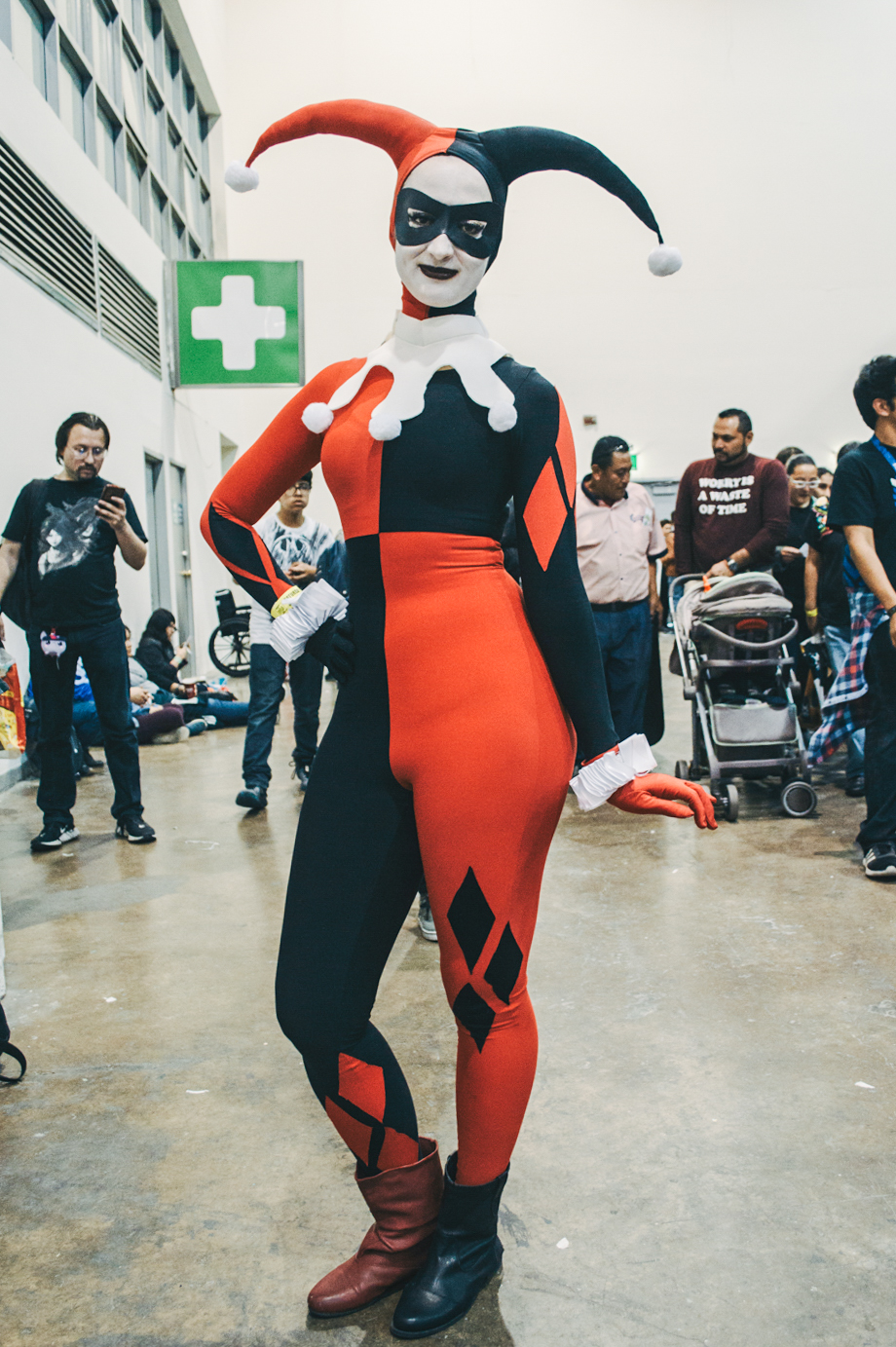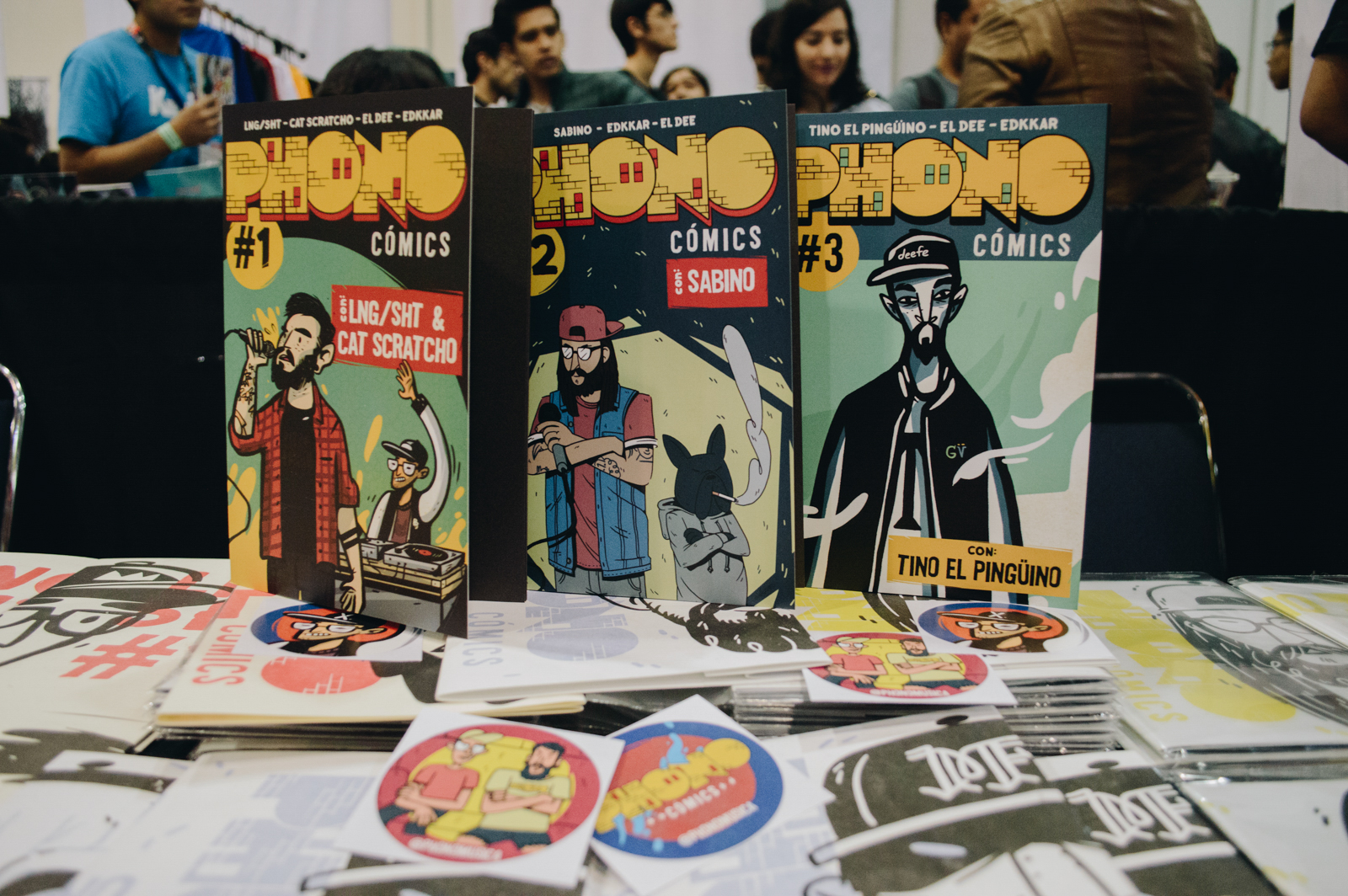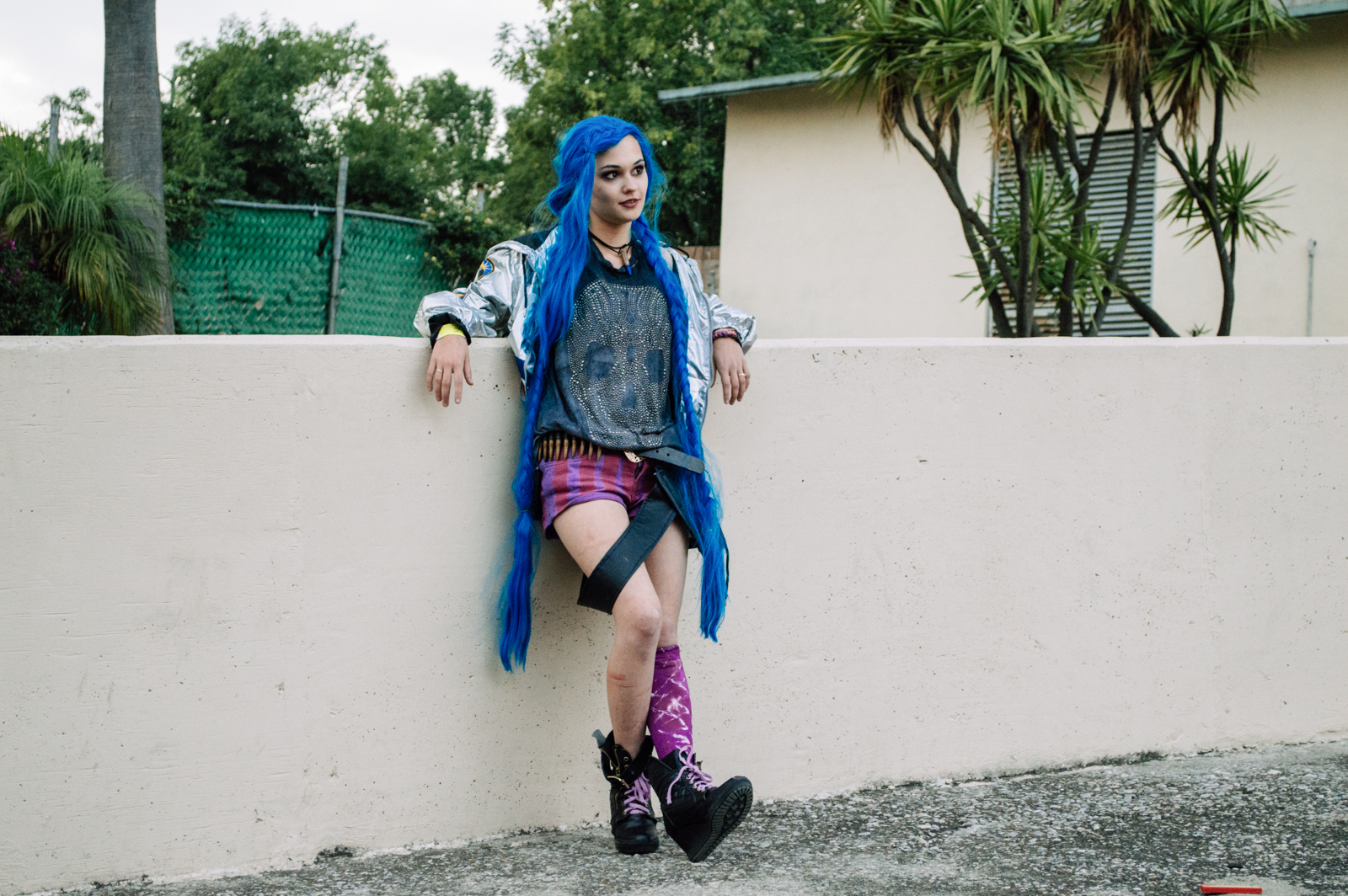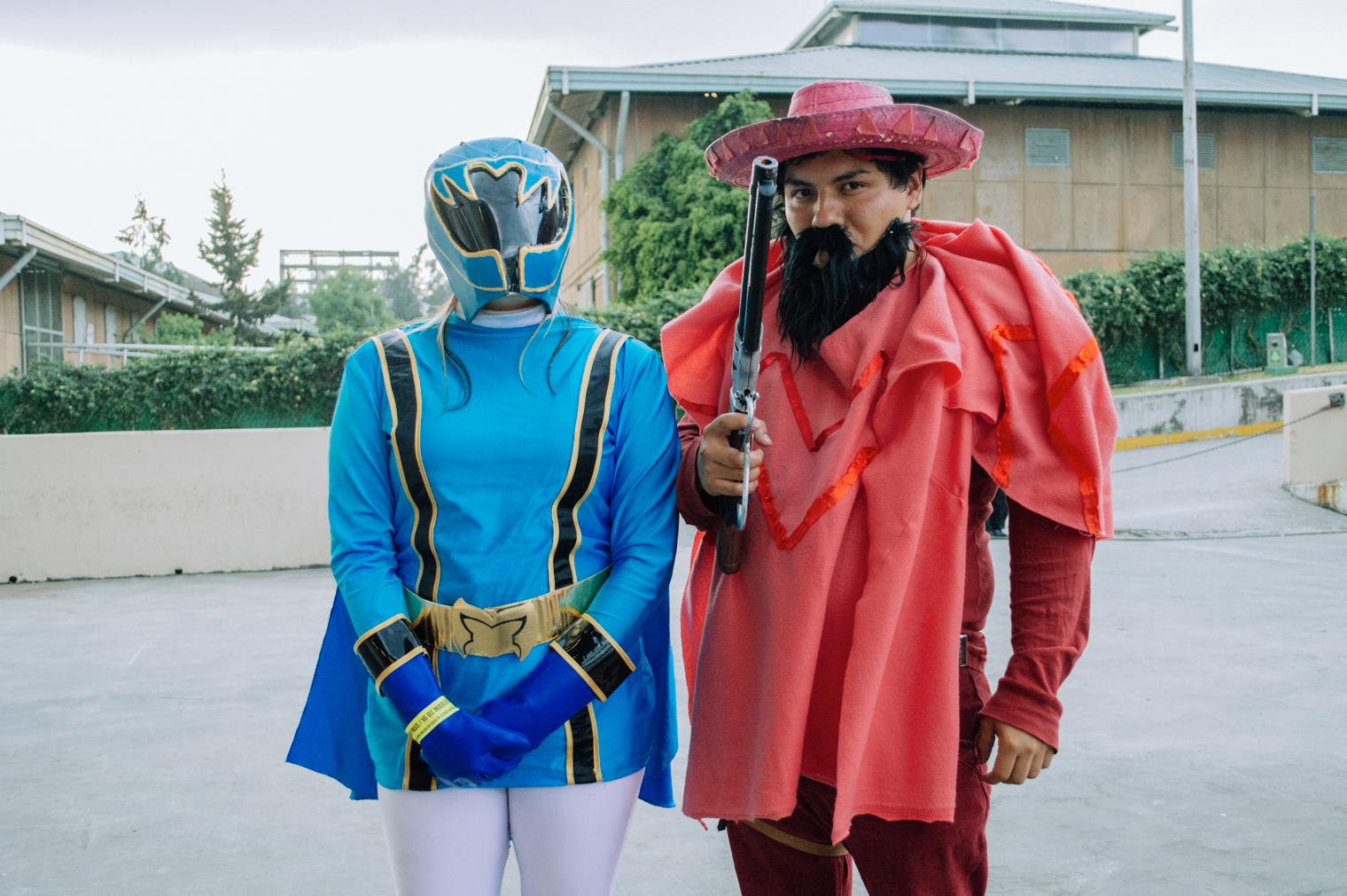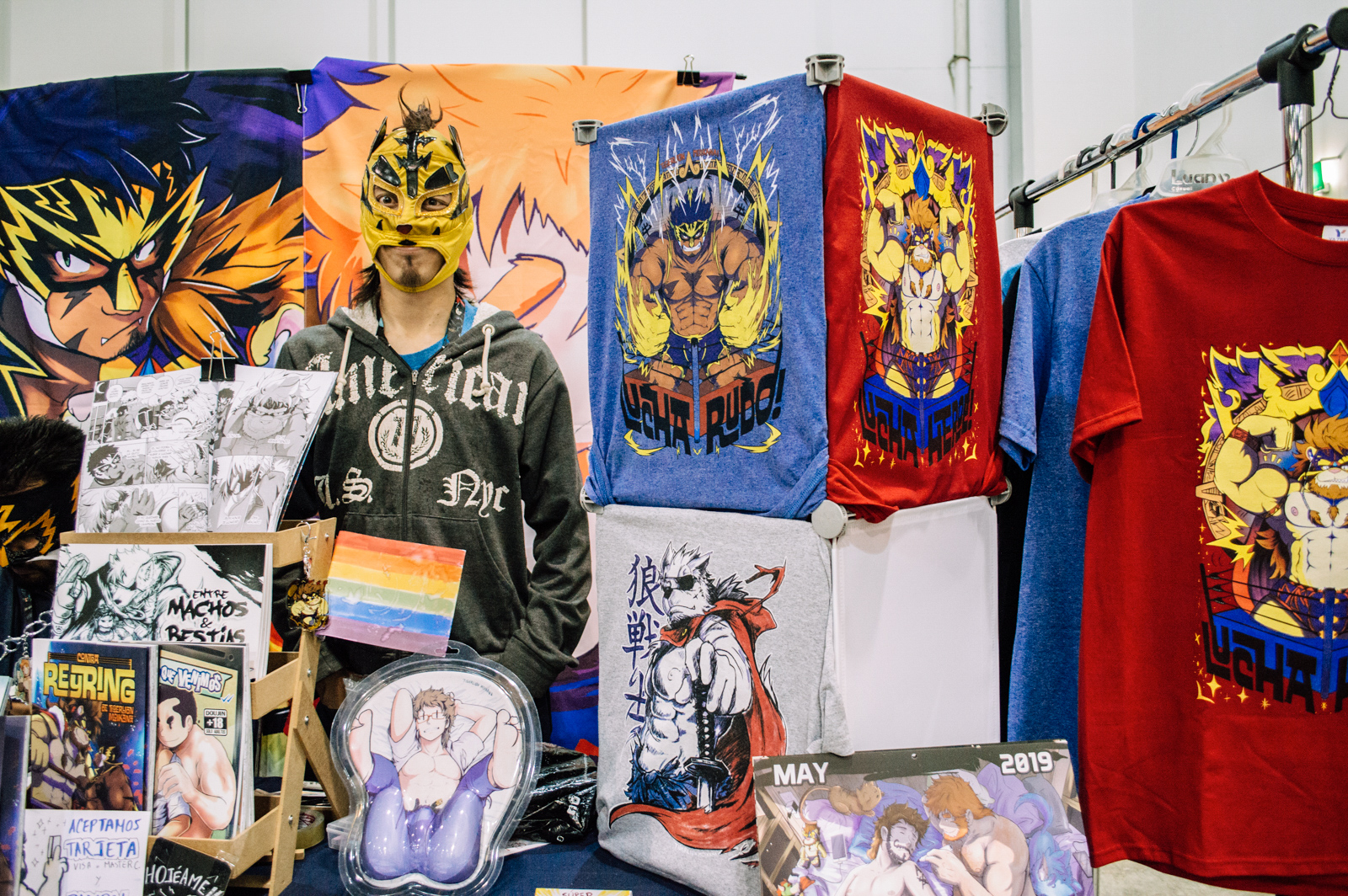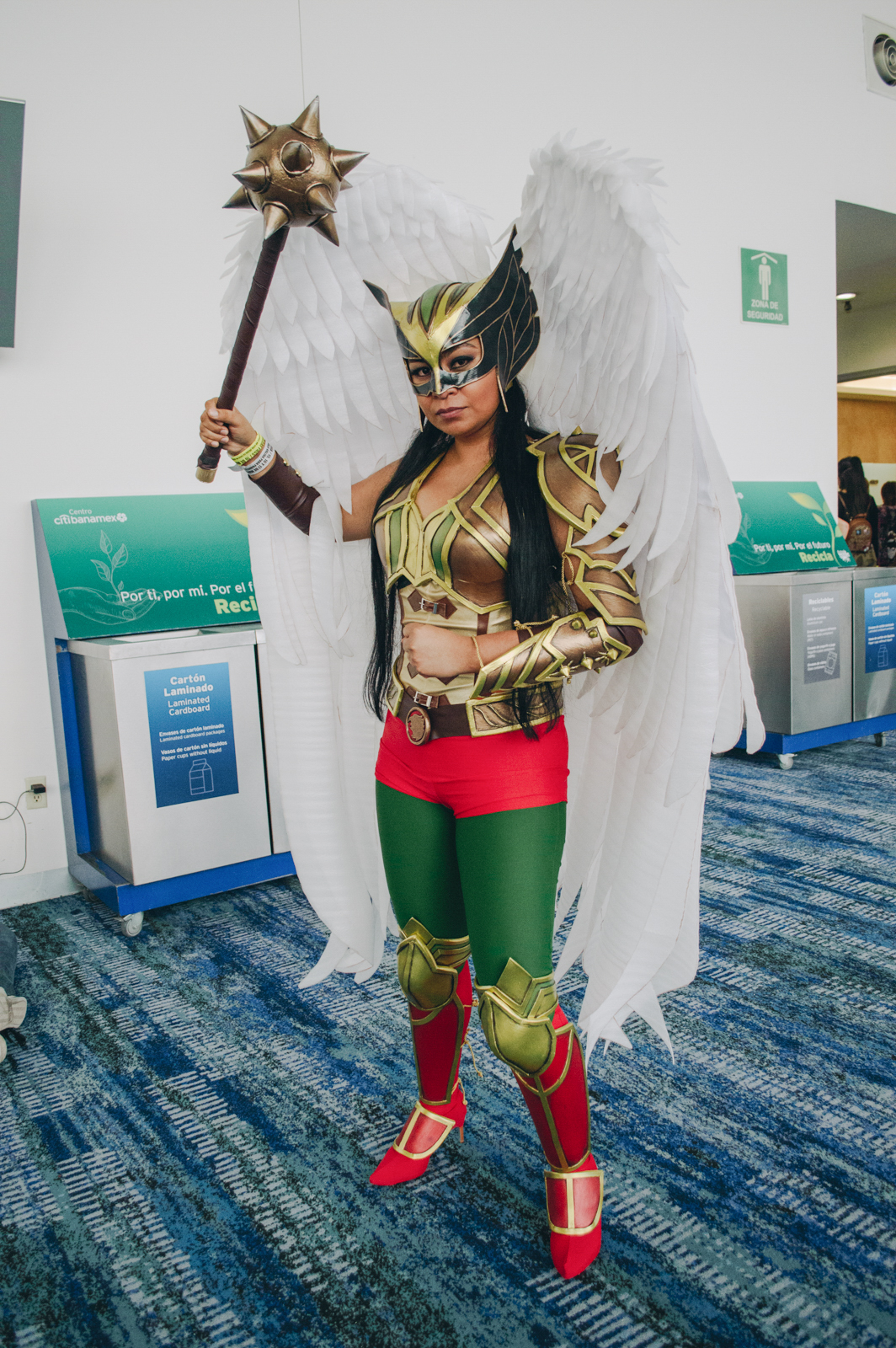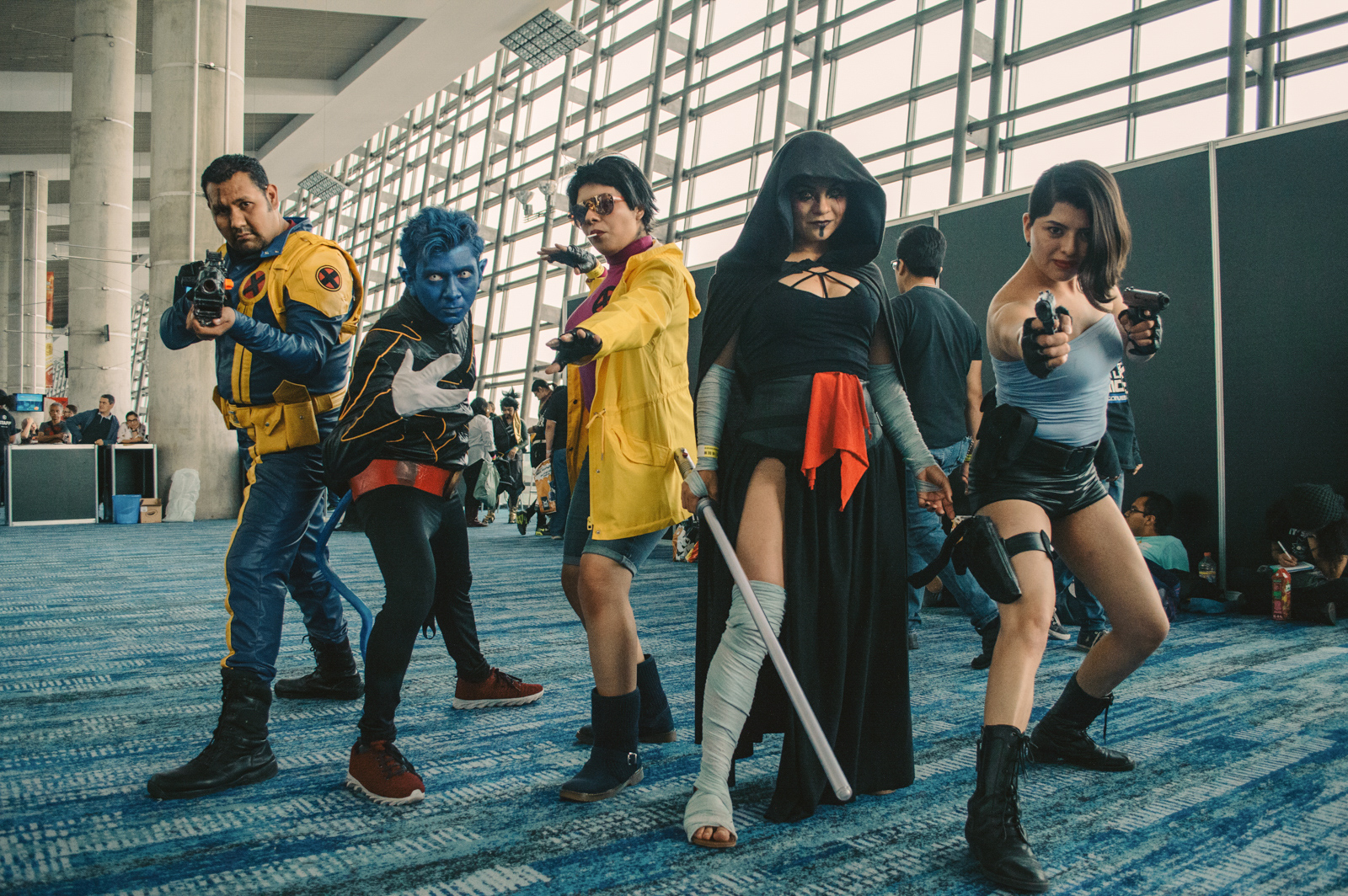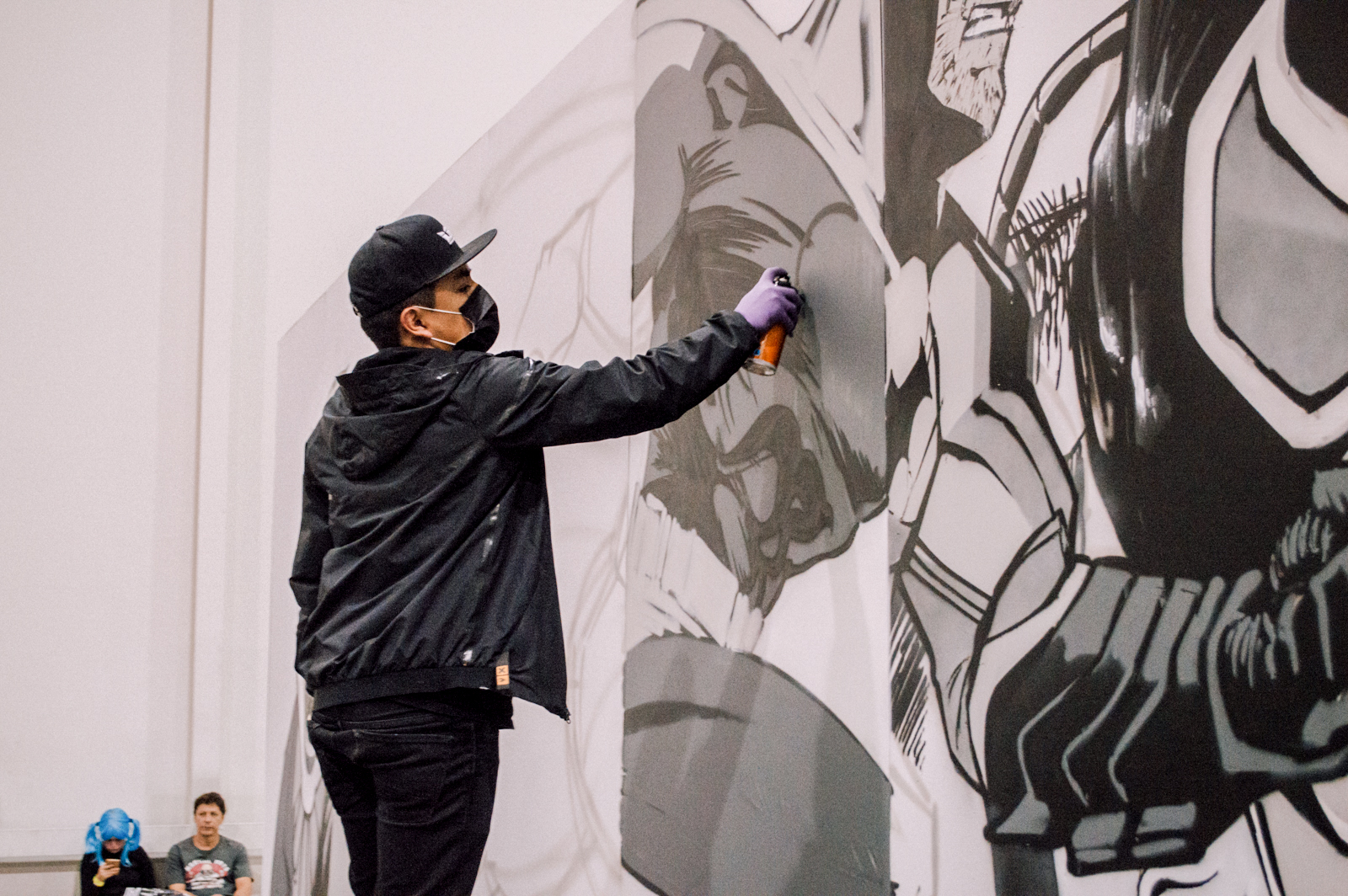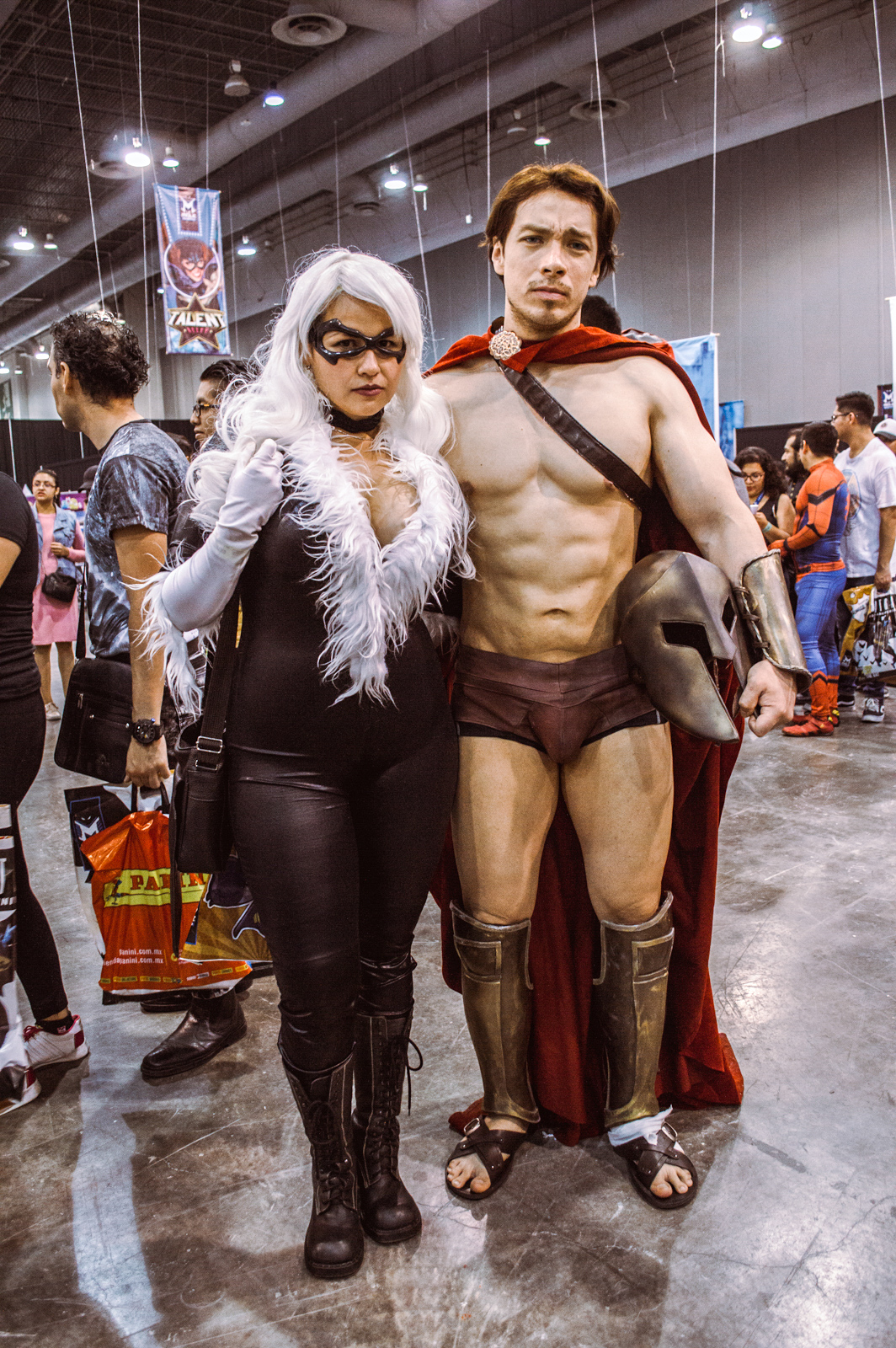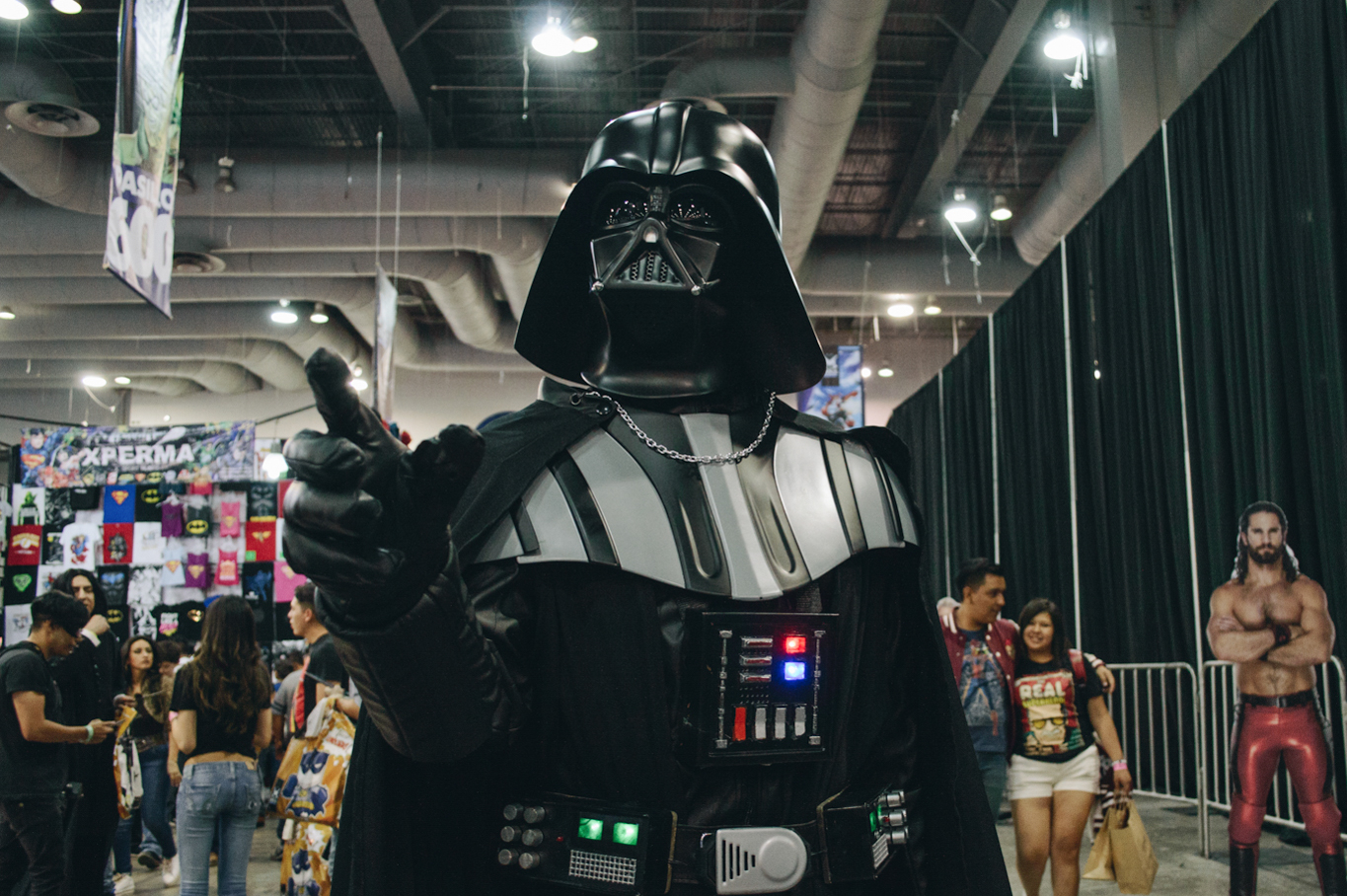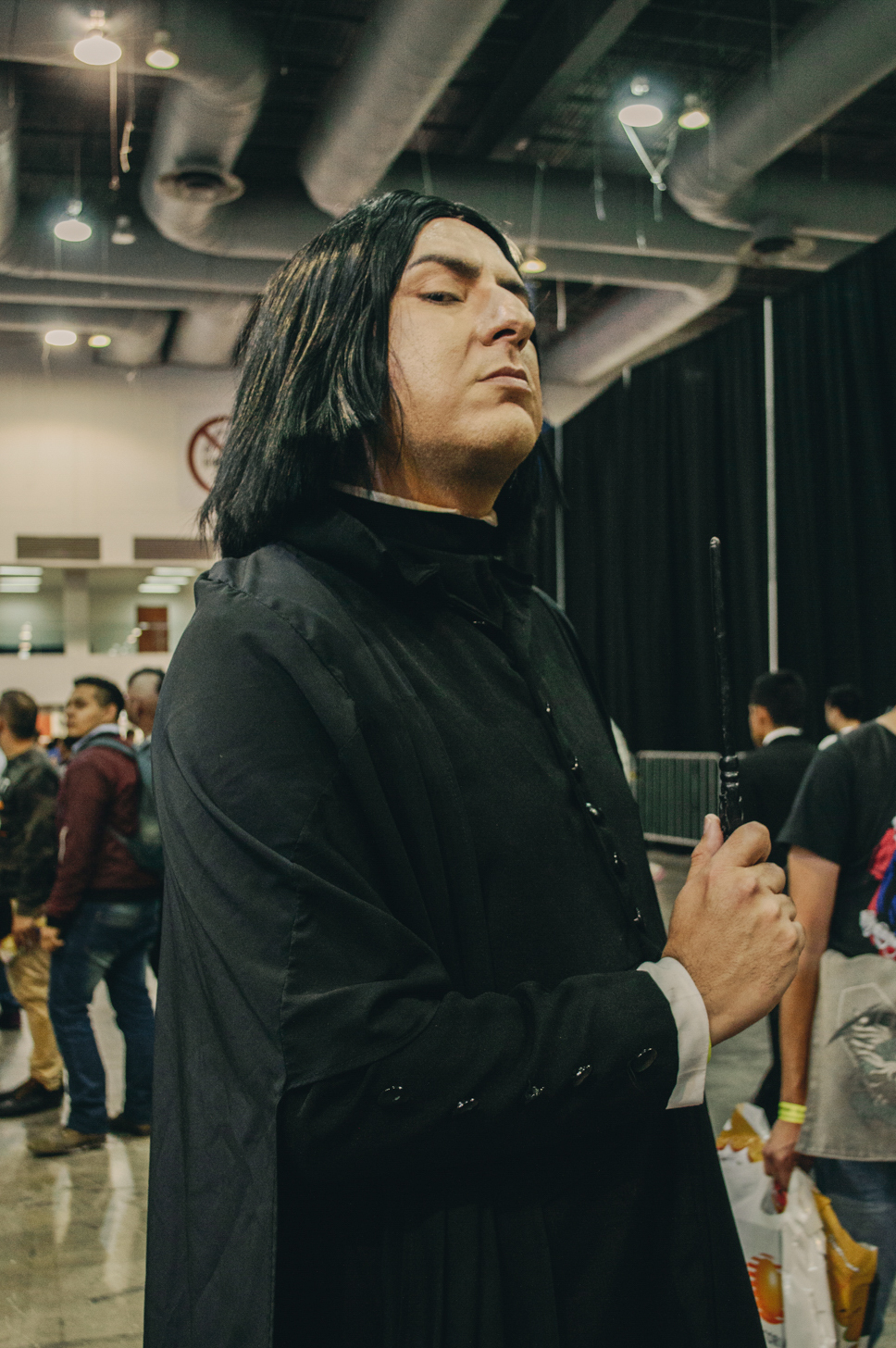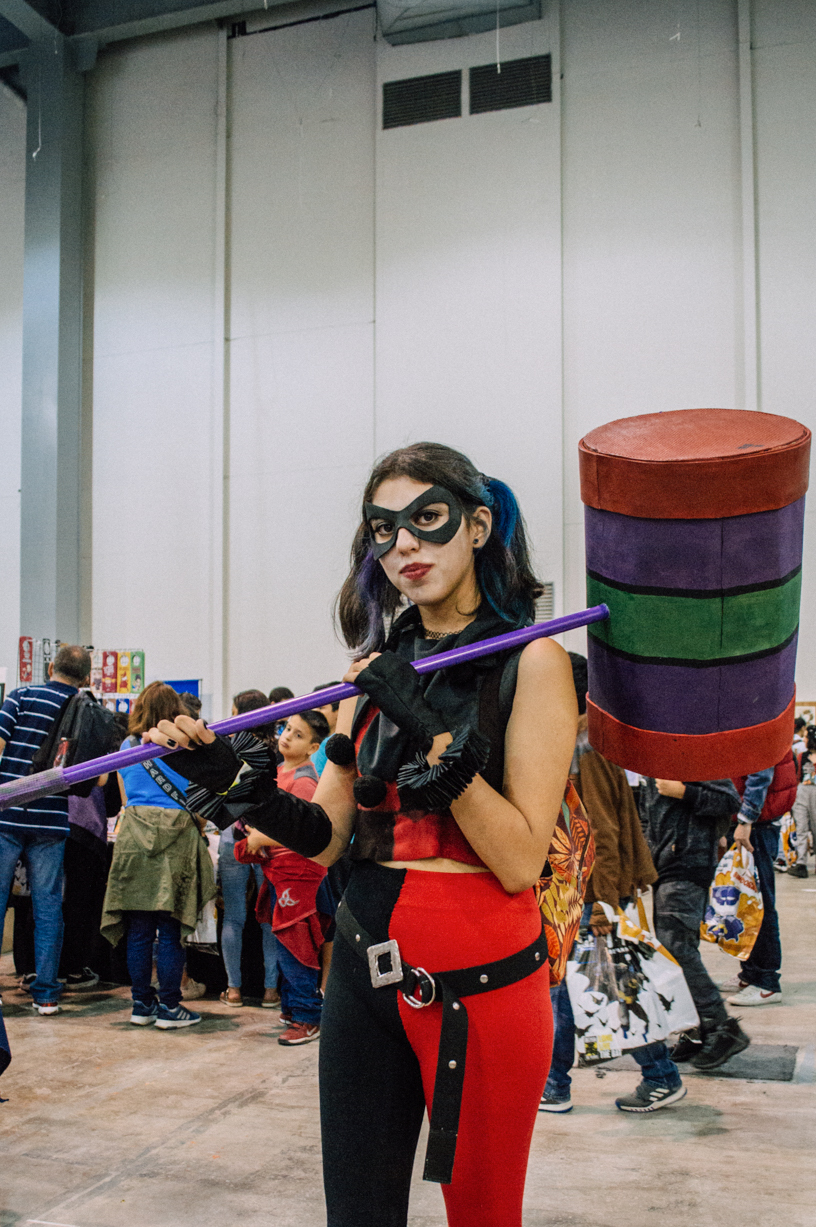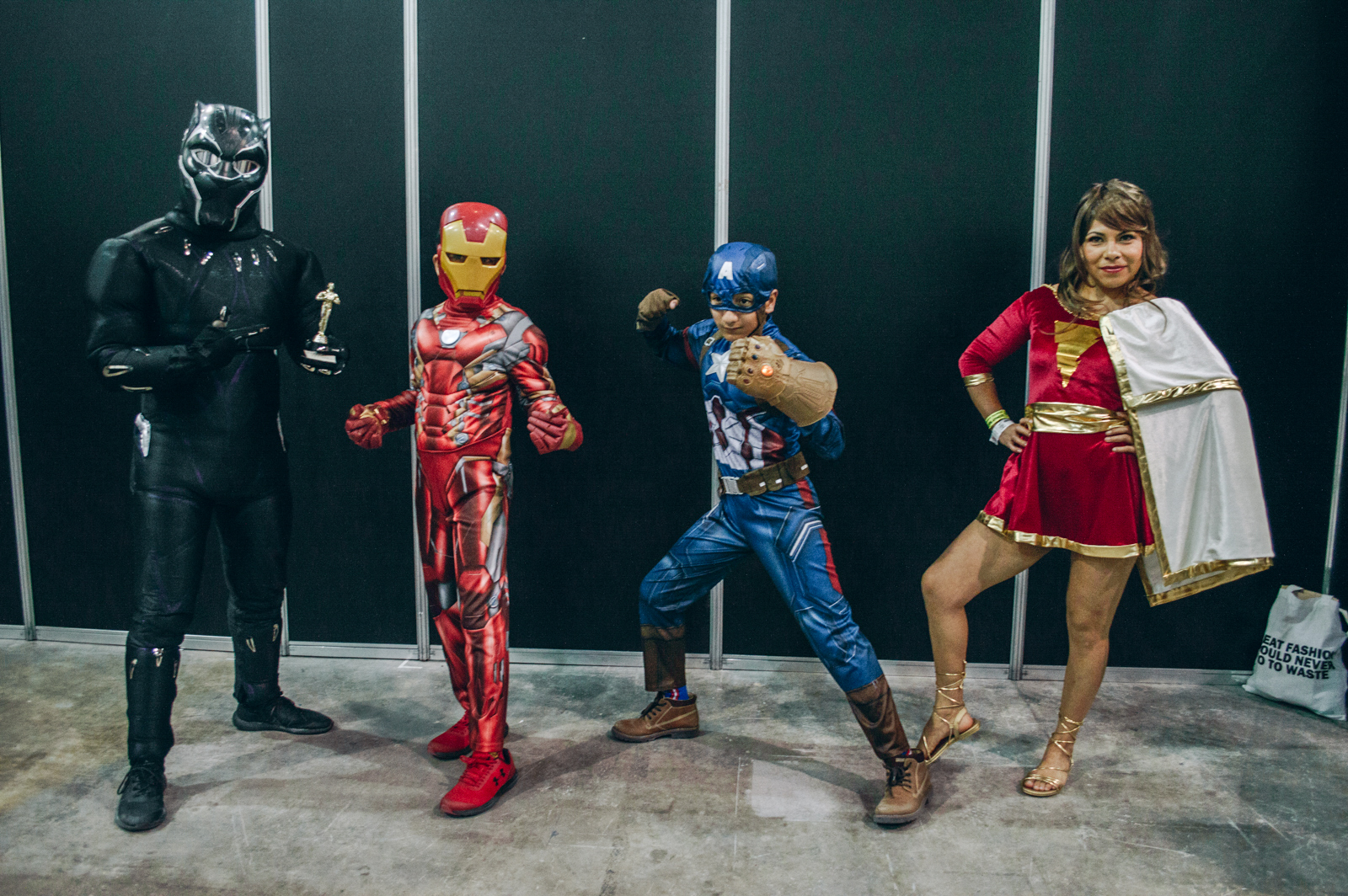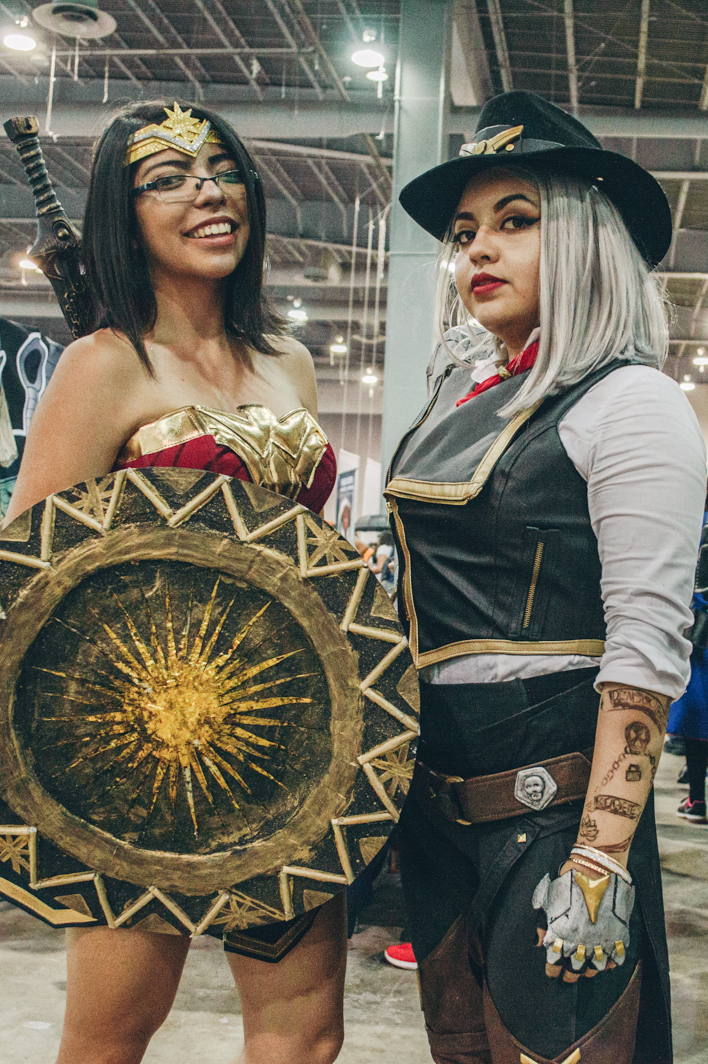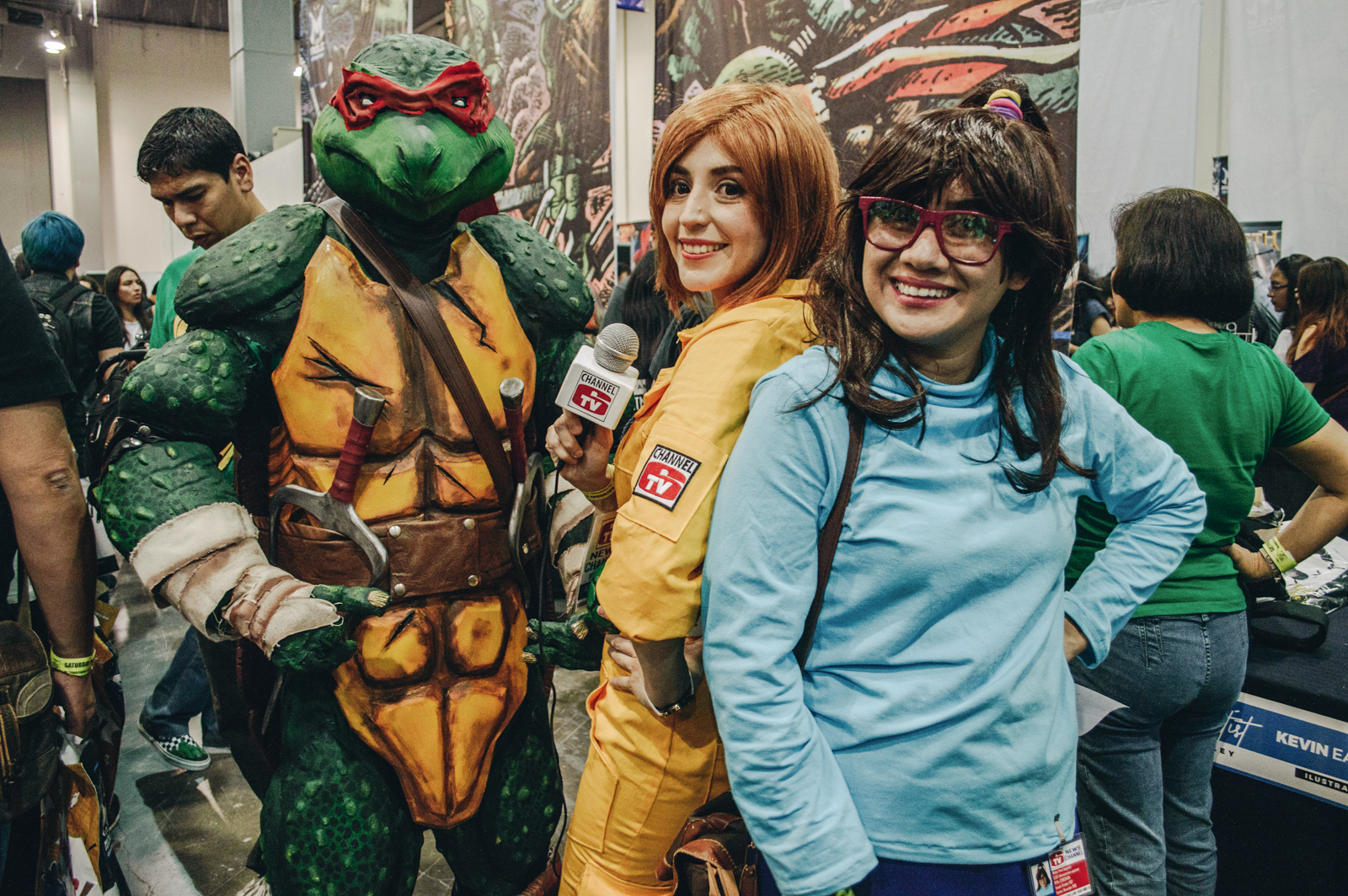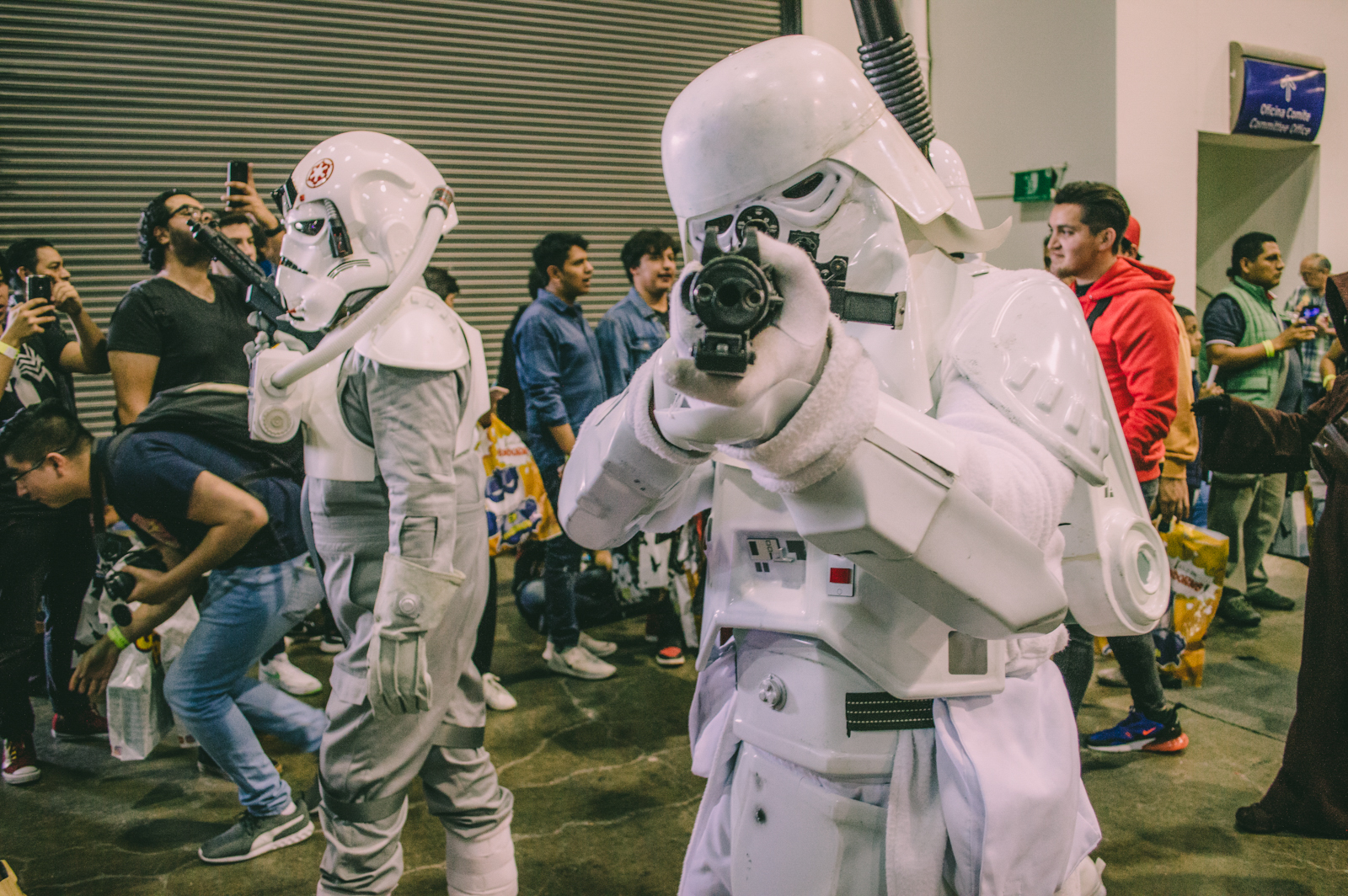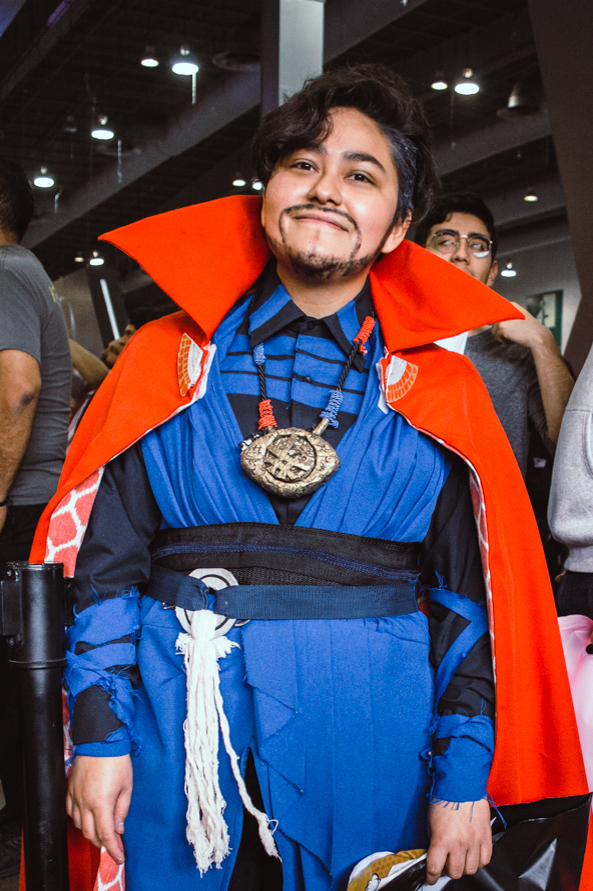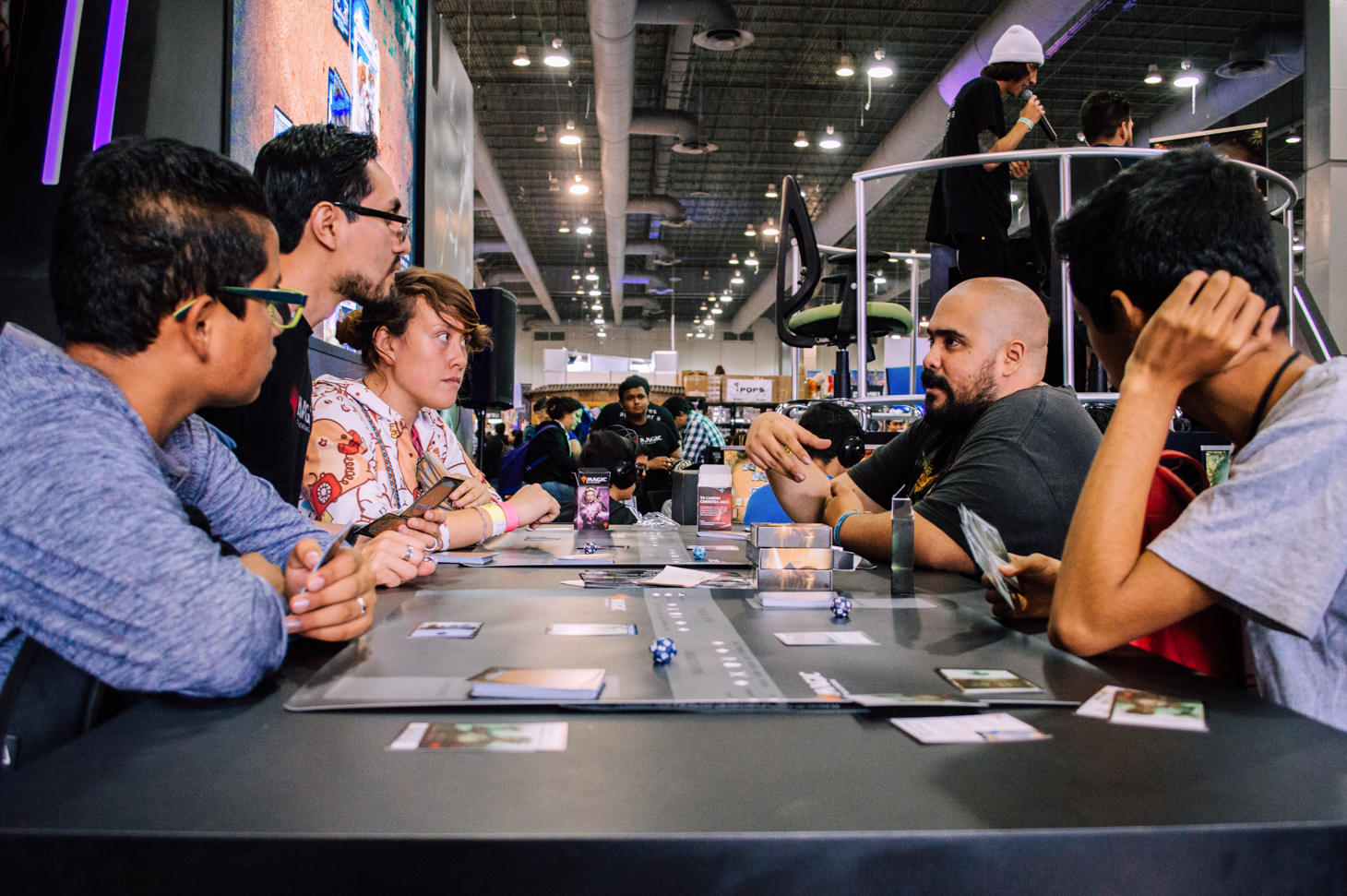Over the weekend, while thousands of music lovers congregated at Mexico City’s Foro Sol for the gargantuan annual happening that is Vive Latino, a very different crowd gathered at the Centro Citibanamex Convention Center to celebrate their own vibrant fandoms. La Mole, Mexico’s largest and longest running comic convention, welcomed thousands of cosplayers, gamers, independent illustrators and celebrity panelists for three days of nerdy community building and enthusiastic peacocking.
The beloved convention has run since 1996 and gets its name from the Spanish translation for The Thing – the wisecracking orange juggernaut of Marvel’s Fantastic Four comics. Once a niche enterprise, La Mole has grown in parallel with the global mainstreaming of geek culture, starting out at Expo Reforma and finding a home in the city’s World Trade Center throughout most of its history. This year, the event graduated to Centro Citibanamex, where longtime attendees praised the new space as better staffed, equipped and ventilated than its predecessors. Multinational staples like Star Wars, Xbox and Funko took up huge swaths of the showroom floor, while smaller vendors lined the isles and manga editorials Panini and Kamite supplied fans with the latest tomes in their favorite Japanese serials.
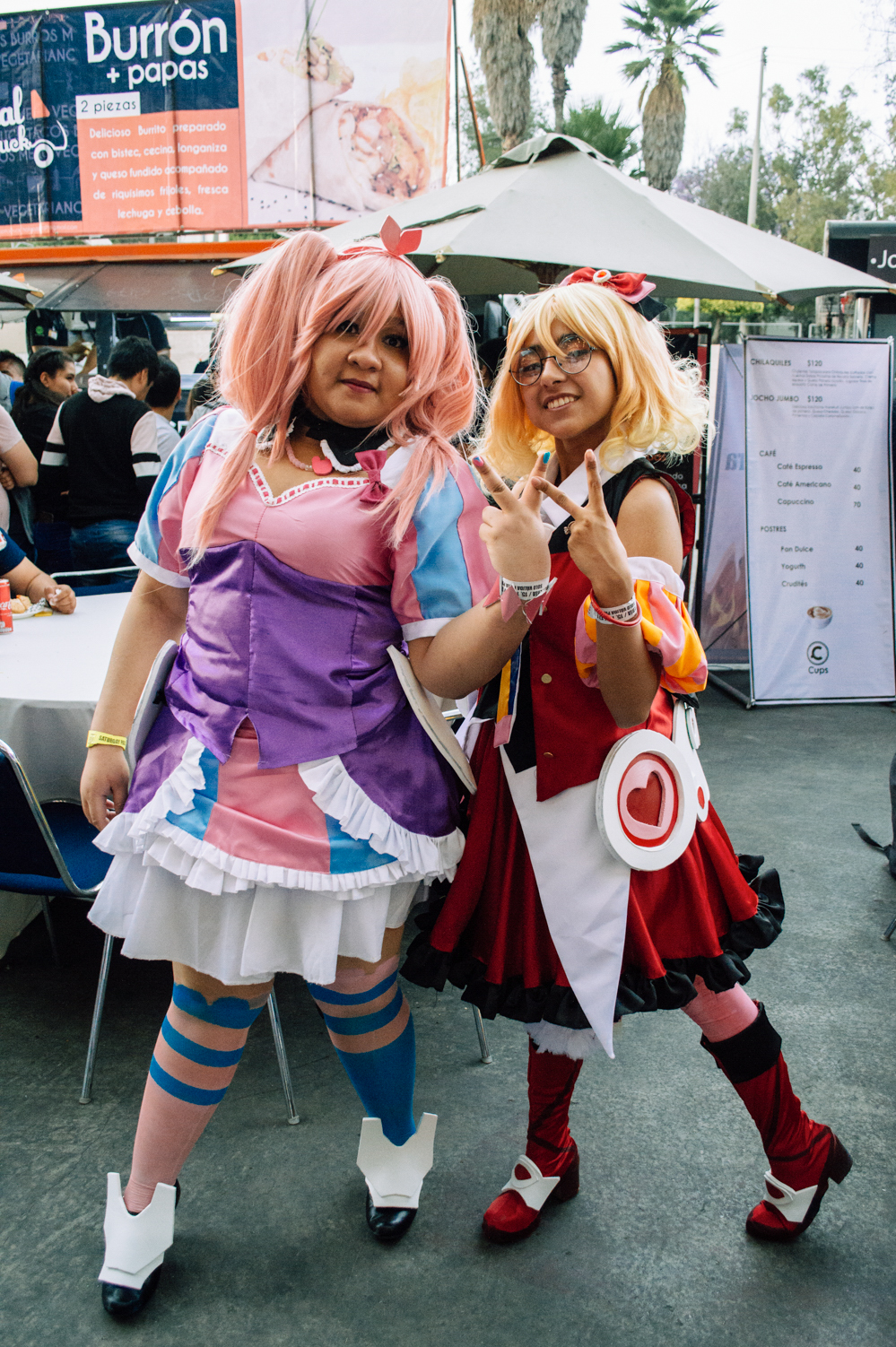
“Creators, writers and illustrators are the soul of these events,” says Martín López, the artist behind La Mole’s promotional posters since its inception 23 years ago. While at the convention to promote his own work, which included numerous illustrations of Mafalda as pop culture icons like Frida Khalo and The Joker, and a new comic strip led by an adorable dog named Shiro, López also reflected on the precarious state of the Mexican comic book industry.
“Classic strips like Angel Mora’s Chanoc have gone out of circulation,” laments López. “Most people remember El Santo and Kaliman as cultural figures, but Mexican comics are surviving thanks to the ideas of young creators who are bringing rich and complex new stories to the table. La Mole has fought very hard to keep artists as the stars, and it’s wonderful to count with that support.”
Over in Artist Alley – the creative heart of every major convention – independent entrepreneurs dazzled fans searching for stories and crafts with a unique personal touch. Small editorials like Corteza and Usaka swept intrigued comic book fans into immersive worlds of high fantasy, while queer writers and illustrators from TigerLion Moikana and Parellet invited curious onlookers to discover an erotic, seldom highlighted side of the art form.
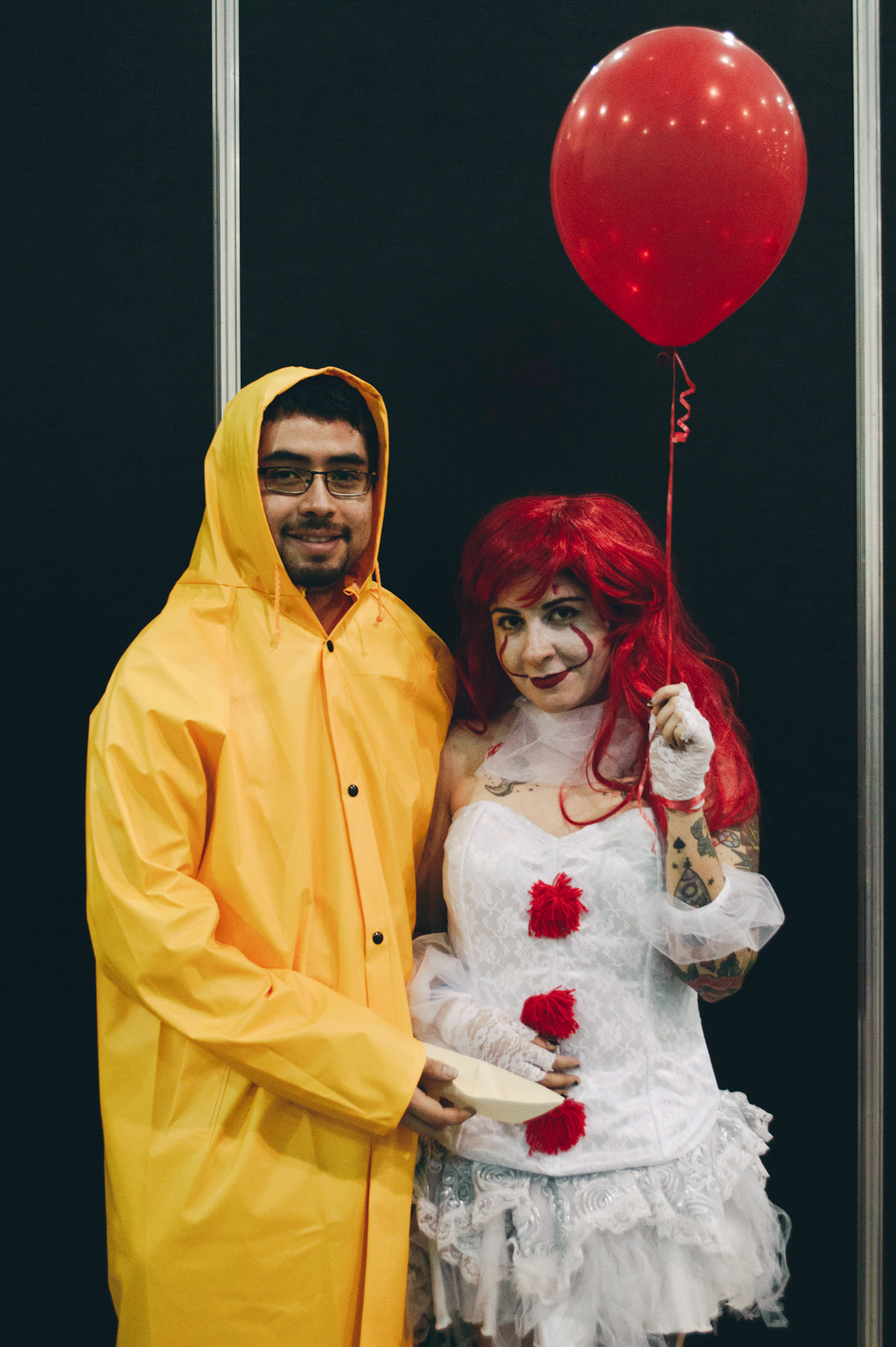
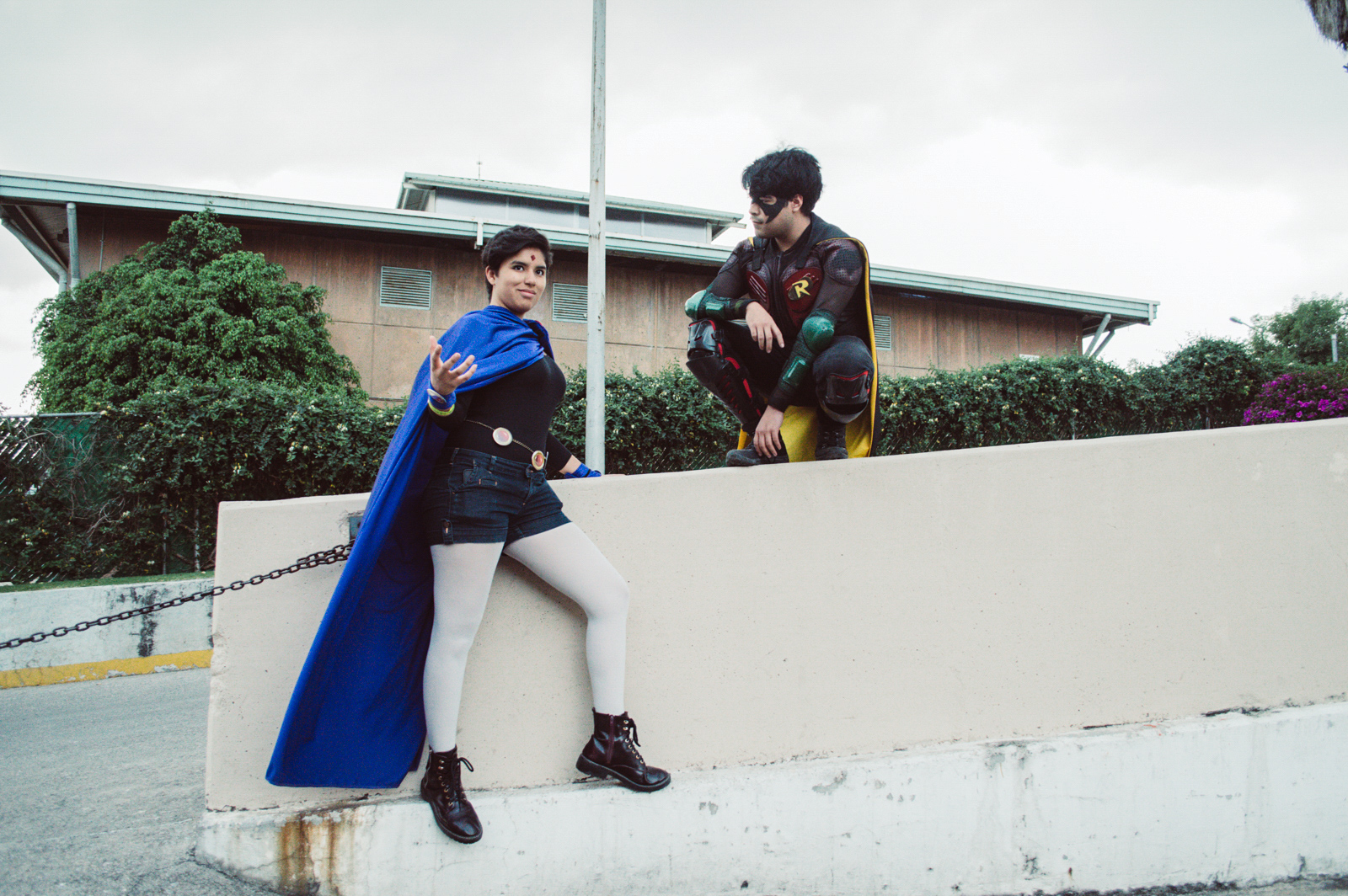
In other cases, artists took inspiration from Mexico’s own vibrant history and culture, illustrating or creating narratives around lucha libre, huichol traditions and the always charming axolotl, an endangered aquatic species native to Mexico City’s Xochimilco delta. PHONO Comics took this creative specificity one step further by developing graphic novels around the lore of Mexican hip-hop, with their most popular books depicting the rise of rappers LNG/SHT, Tino el Pingüino and Sabino.
“We love drama,” says Gaby Maya, a pioneer of manga and anime in Mexico, commenting on the popularity of fan culture across Latin America. Her licensing work with Japanese publishers Kodansha and Shueisha helped bring beloved shows like Sailor Moon and Dragon Ball to Mexico, where they were dubbed and made anime a continental craze. “We love a story that combines action, romance, a bit of betrayal, and redeemable villains,” she says. “The hero is always impossibly persistent and inspires the characters around them, often giving back to the community. This kind of message is one we crave in Latin America, and that is why it resonates so profoundly with readers and viewers.”
Among La Mole’s numerous eye-catching phenomena, none could rival the unbridled joy of perfectly executed cosplay. Massive franchises like X-Men, Game of Thrones and the Halo videogames were all represented by squads of friends and impeccably coordinated families, all of whom delighted in photo-ops and run ins with their doppelgängers. High conceptualists in steampunk-inspired outfits and handmade armors posed for hours on the main floor, while furries and fans in Lolita fashions showcased the plurality of fandoms under the geek and fantasy umbrella.
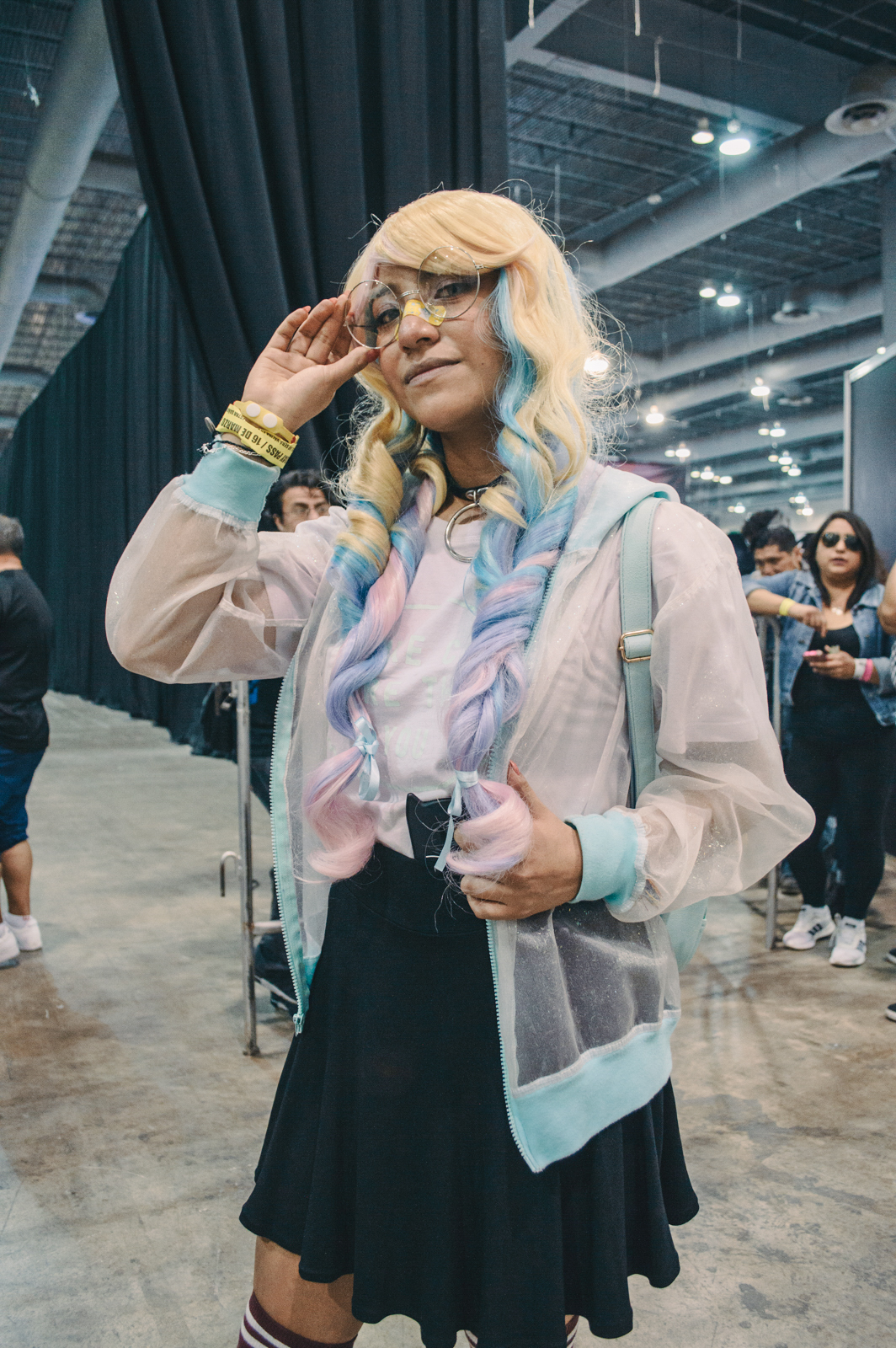
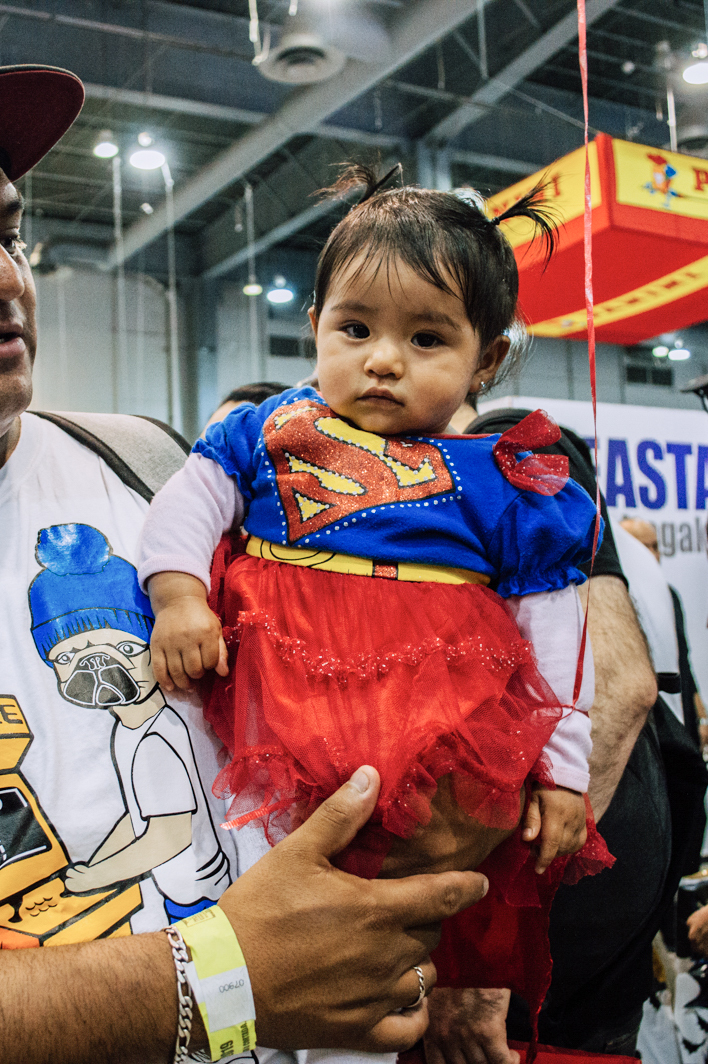
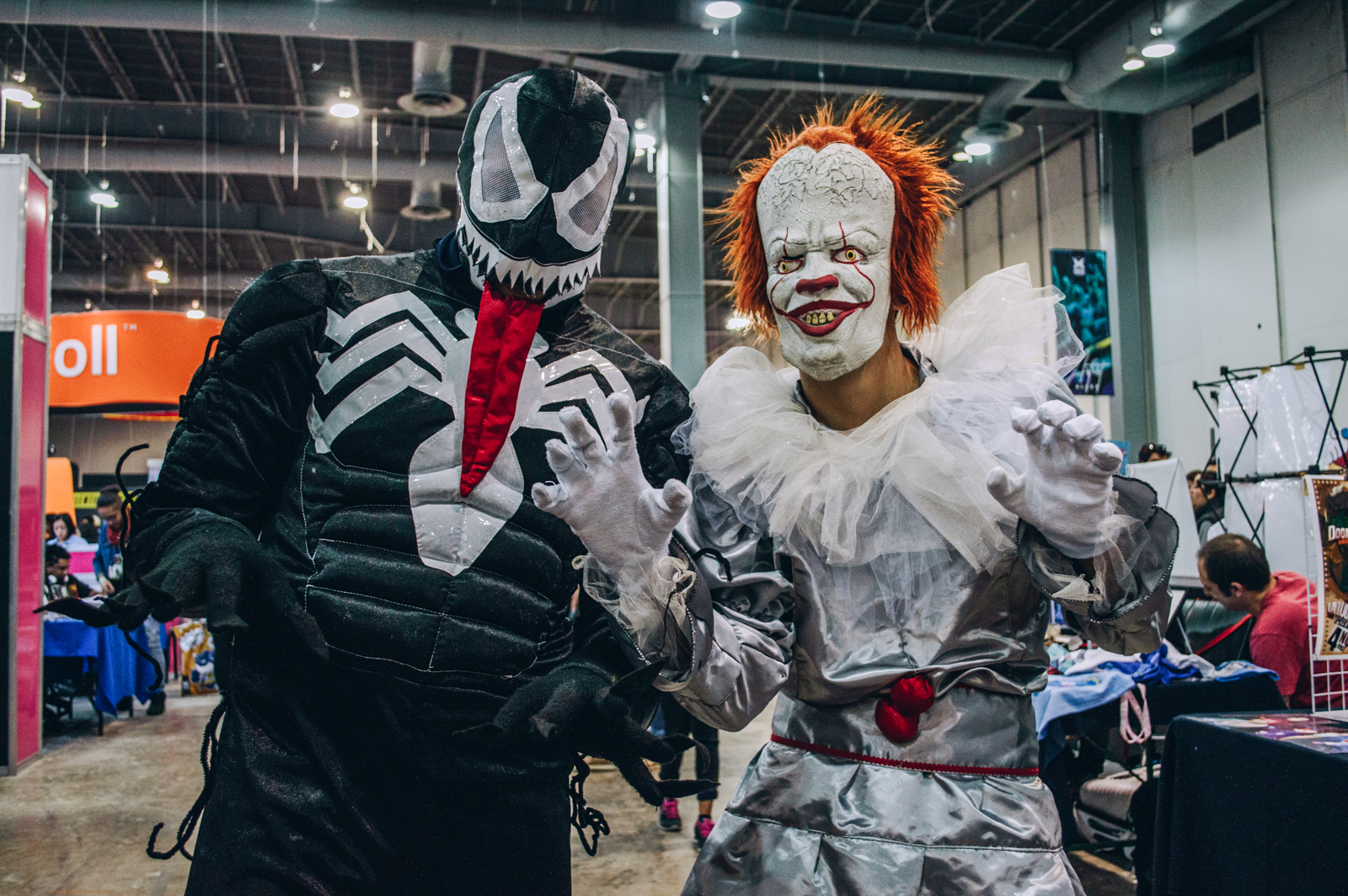
“When I was younger I fell in love with the extravagant costumes I’d see at cons,” says Luna, a 20-year old cosplayer attending La Mole for the sixth year. “I didn’t know how to sew back then, so I hot glued everything together and little by little began picking up more skills.”
Luna dressed as Himiko Toga, a deranged schoolgirl villain from popular series My Hero Academia, no doubt the anime du jour as evidenced by the veritable sea of costumed fans and paraphernalia. The series takes place in a world where 80% of the human population possesses superhuman abilities, commonly referred to as quirks, and puts an ideological twist on the hero/villain operas that have come to dominate modern scripted television and film. Luna was accompanied by her friend Franz, who portrayed fellow antagonist Dabi, and Eriden who dressed in a genderbend of Shota Aizawa, a notable teacher from the titular academy. The three are semi-professional cosplayers, labeling themselves as such due to their expertly made costumes and constant convention appearances, which are not yet sponsored or remunerated.
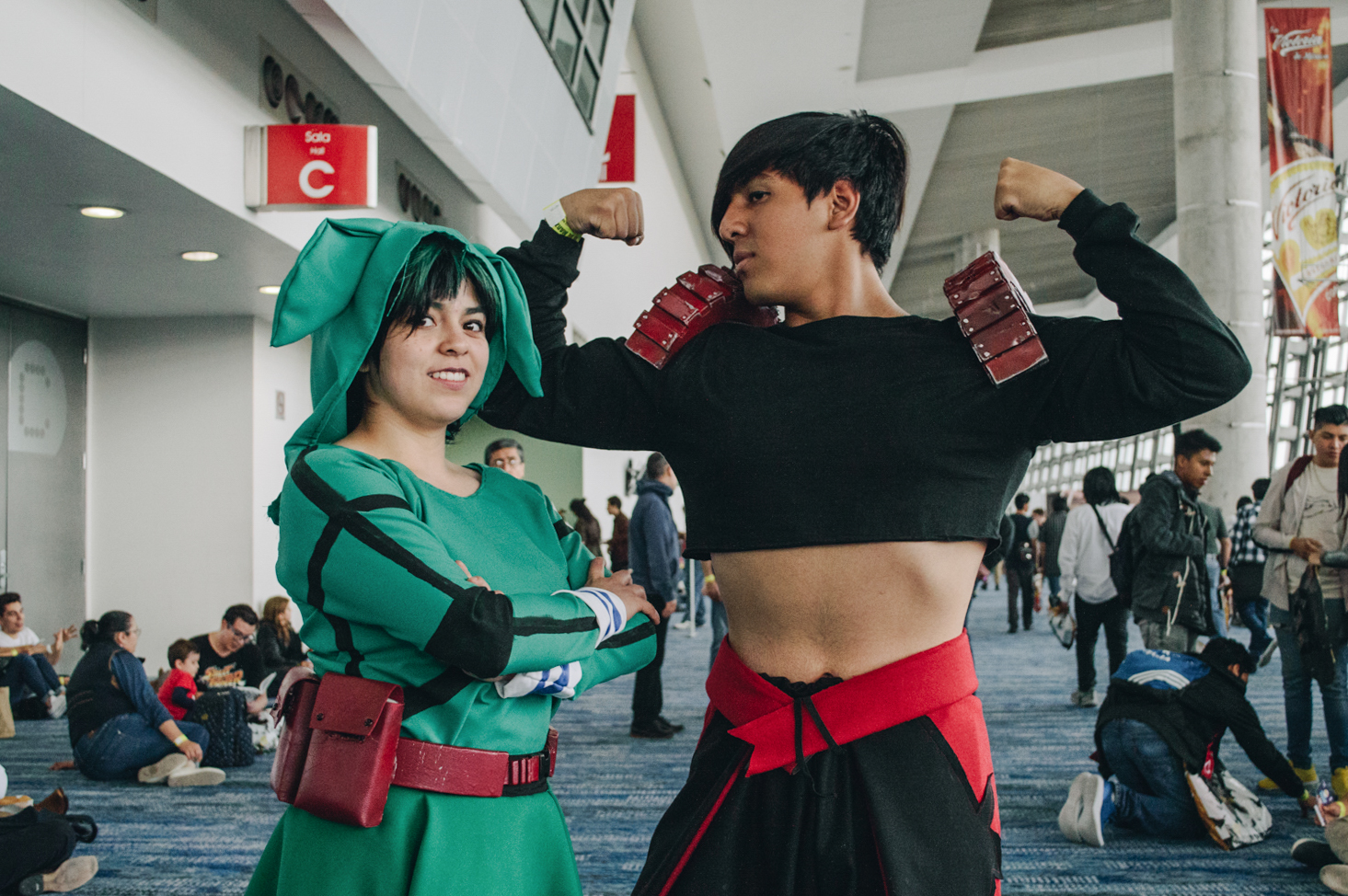
“I’ve also had to deal with people trying to take advantage of my costumes,” says Luna, as the conversation turns to the subject of consent, a growing concern among cosplayers who must fend off invasive fans and photographers. “If I’m wearing a short skirt,” she adds, “people want to take pictures from a certain angle to get a sneaky peek, or they’ll just walk by and lift my skirt. Fortunately, security at La Mole has always been very attentive whenever a complaint has been lodged, while other conventions have completely ignored us.”
Innovation and a strong sense of community have made La Mole a tent pole within a booming convention industry, competing against other huge events like PopCon and Expo TNT in Mexico City and flanked by La CONVE in Monterrey and La CONQUE in Querétaro. Conventions are now a seasonal culmination of perennial fandom, which thrives online and at large anime and merch malls called Friki Plazas, found in every major city around Mexico. With all this attention around geek culture, La Mole remains a prime example of how these events can promote the rich ecosystem of artists and devoted fans without selling them out to corporate interests.
